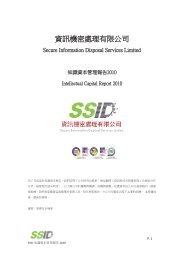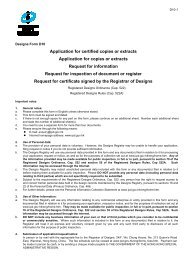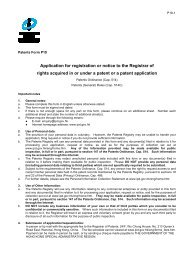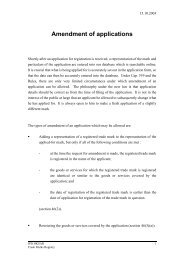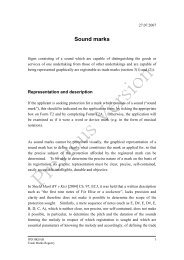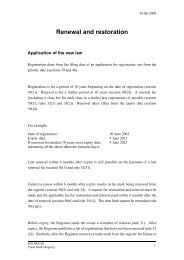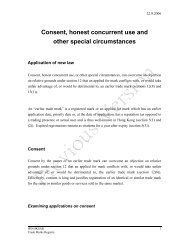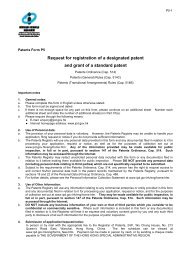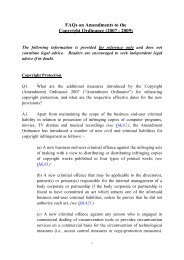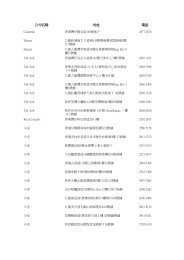Report
Report
Report
Create successful ePaper yourself
Turn your PDF publications into a flip-book with our unique Google optimized e-Paper software.
- 24 -<br />
(a)<br />
Lack of control<br />
Given the crucial role played by patent institutions<br />
in shaping innovation incentives, 29 the current<br />
system does not allow control over essential matters<br />
to ensure that it is meeting the changing needs of<br />
Hong Kong. For instance, the time required to<br />
process the designated patent applications (an<br />
average of 25 months in SIPO, and 43.9 months at<br />
EPO), 30 the cost and fee structure, and the patent<br />
standards are, to a certain extent, affected by the<br />
laws and practices of the designated patent offices.<br />
(b)<br />
Inconvenience to local inventors<br />
An applicant who wants to seek patent protection in<br />
Hong Kong alone cannot apply for a standard patent<br />
directly in Hong Kong. He has to first file a patent<br />
application at one of the designated patent offices.<br />
The application takes time and may involve<br />
complicated procedures. It may be costly, as<br />
foreign patent agents have to be engaged and extra<br />
filing costs are charged for filing an application at<br />
the designated office. This extra step of filing the<br />
29<br />
See WIPO, “World Intellectual Property <strong>Report</strong> 2011 – The Changing Face of Innovation”<br />
(p.12) –<br />
“economic research has come to recognise the crucial role played by patent institutions in shaping<br />
innovation incentives. Patent institutions perform the essential tasks of ensuring the quality of<br />
patents granted and providing balanced dispute resolution. Unprecedented levels of patenting have<br />
put these institutions under considerable pressure. Many patent offices have seen growing<br />
backlogs of pending applications.” “The choices patent offices face can have far-reaching<br />
consequences on incentives to innovate. These include the amount of fees to charge, how to<br />
involve third parties in the patenting process, how best to make use of [Information and<br />
Communication Technologies] and the level and type of international cooperation to pursue. In<br />
making these choices, a key challenge is to reconcile incentives for efficient office operations with<br />
a patenting process that promotes society’s best interest.”<br />
30<br />
The average duration is calculated according to the patent examination pendency between 2005<br />
and 2009 stated in the Annual <strong>Report</strong>s of EPO and SIPO.



